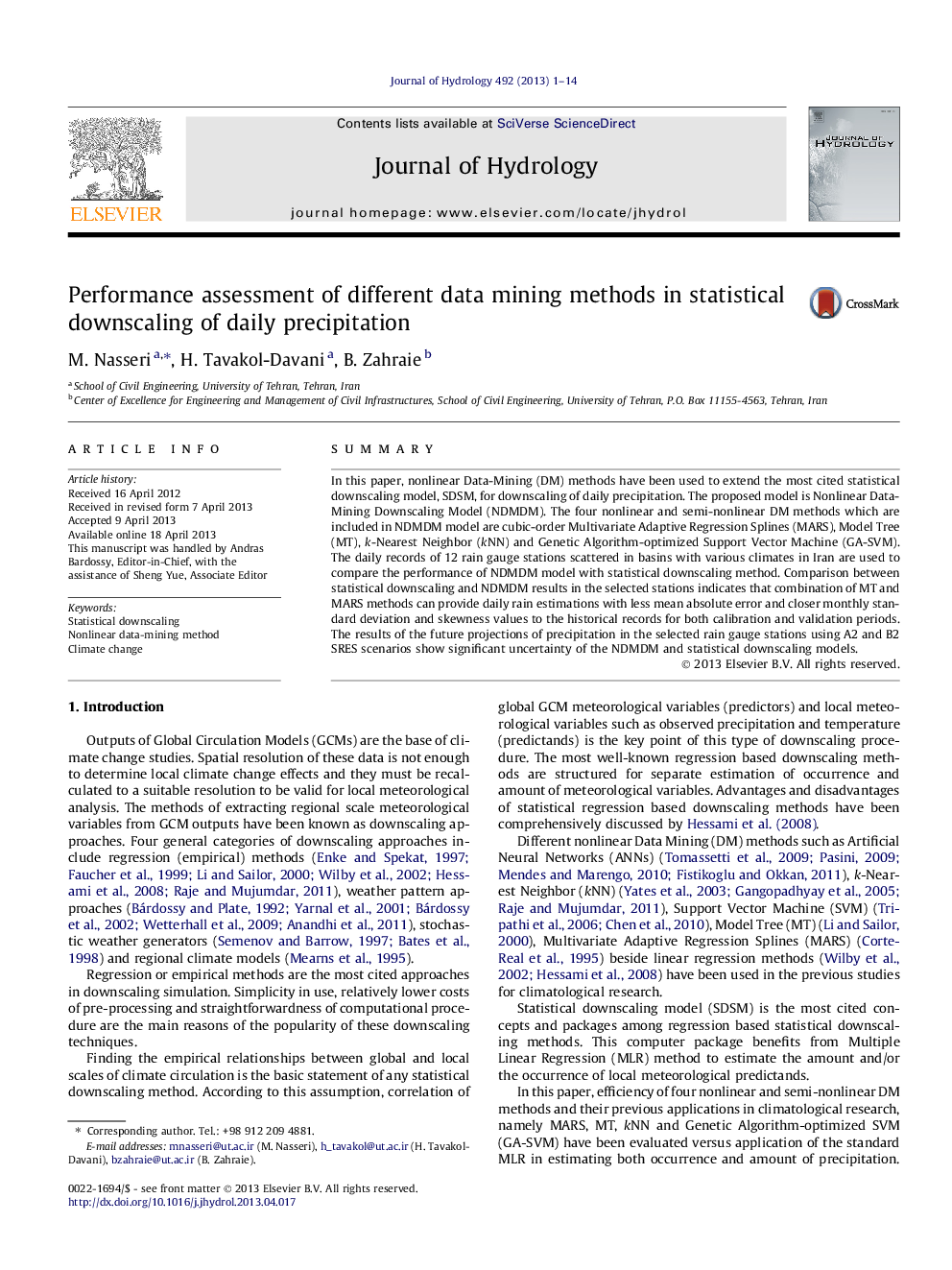| Article ID | Journal | Published Year | Pages | File Type |
|---|---|---|---|---|
| 6413771 | Journal of Hydrology | 2013 | 14 Pages |
â¢Regression-based of downscaling such as SDSM has been coded in MATLAB.â¢Nonlinear Data-Mining Downscaling Model (NDMDM), as a toolbox, has been programmed.â¢Four nonlinear and semi nonlinear data-mining method have been implemented in NDMDM.â¢Twelve rain gauges with different climate have been used as case studies.â¢Results of NDMDM have been better than statistical downscaling method using three statistical indices.
SummaryIn this paper, nonlinear Data-Mining (DM) methods have been used to extend the most cited statistical downscaling model, SDSM, for downscaling of daily precipitation. The proposed model is Nonlinear Data-Mining Downscaling Model (NDMDM). The four nonlinear and semi-nonlinear DM methods which are included in NDMDM model are cubic-order Multivariate Adaptive Regression Splines (MARS), Model Tree (MT), k-Nearest Neighbor (kNN) and Genetic Algorithm-optimized Support Vector Machine (GA-SVM). The daily records of 12 rain gauge stations scattered in basins with various climates in Iran are used to compare the performance of NDMDM model with statistical downscaling method. Comparison between statistical downscaling and NDMDM results in the selected stations indicates that combination of MT and MARS methods can provide daily rain estimations with less mean absolute error and closer monthly standard deviation and skewness values to the historical records for both calibration and validation periods. The results of the future projections of precipitation in the selected rain gauge stations using A2 and B2 SRES scenarios show significant uncertainty of the NDMDM and statistical downscaling models.
